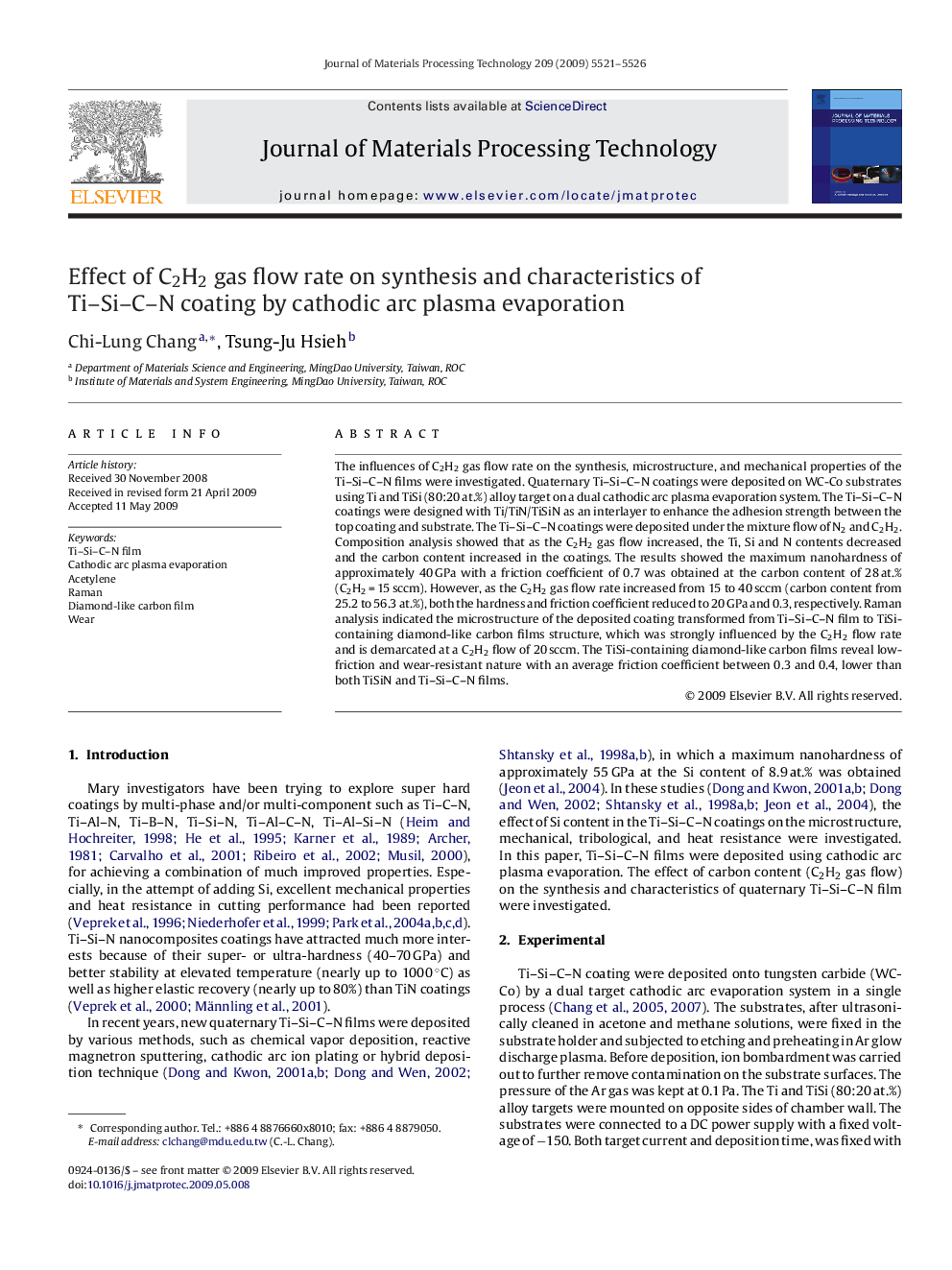| Article ID | Journal | Published Year | Pages | File Type |
|---|---|---|---|---|
| 795075 | Journal of Materials Processing Technology | 2009 | 6 Pages |
The influences of C2H2 gas flow rate on the synthesis, microstructure, and mechanical properties of the Ti–Si–C–N films were investigated. Quaternary Ti–Si–C–N coatings were deposited on WC-Co substrates using Ti and TiSi (80:20 at.%) alloy target on a dual cathodic arc plasma evaporation system. The Ti–Si–C–N coatings were designed with Ti/TiN/TiSiN as an interlayer to enhance the adhesion strength between the top coating and substrate. The Ti–Si–C–N coatings were deposited under the mixture flow of N2 and C2H2. Composition analysis showed that as the C2H2 gas flow increased, the Ti, Si and N contents decreased and the carbon content increased in the coatings. The results showed the maximum nanohardness of approximately 40 GPa with a friction coefficient of 0.7 was obtained at the carbon content of 28 at.% (C2H2 = 15 sccm). However, as the C2H2 gas flow rate increased from 15 to 40 sccm (carbon content from 25.2 to 56.3 at.%), both the hardness and friction coefficient reduced to 20 GPa and 0.3, respectively. Raman analysis indicated the microstructure of the deposited coating transformed from Ti–Si–C–N film to TiSi-containing diamond-like carbon films structure, which was strongly influenced by the C2H2 flow rate and is demarcated at a C2H2 flow of 20 sccm. The TiSi-containing diamond-like carbon films reveal low-friction and wear-resistant nature with an average friction coefficient between 0.3 and 0.4, lower than both TiSiN and Ti–Si–C–N films.
